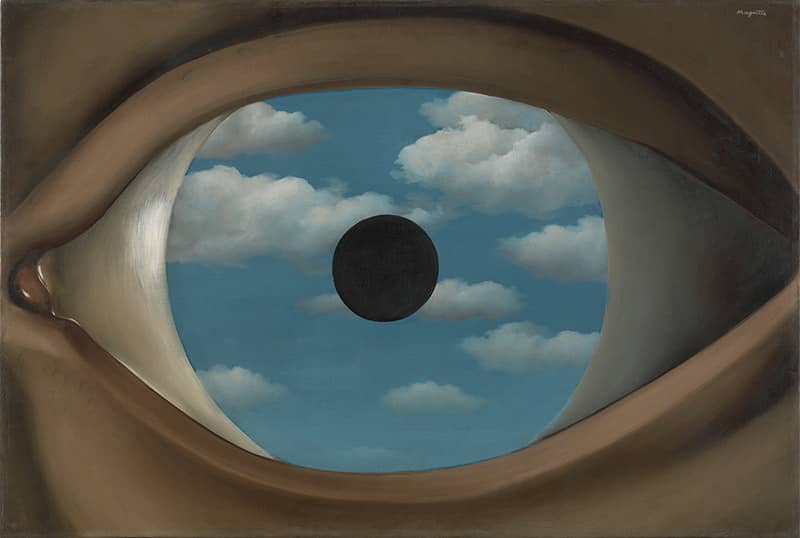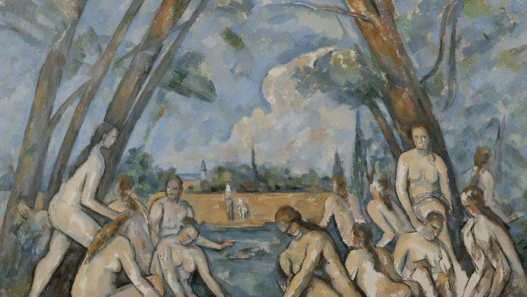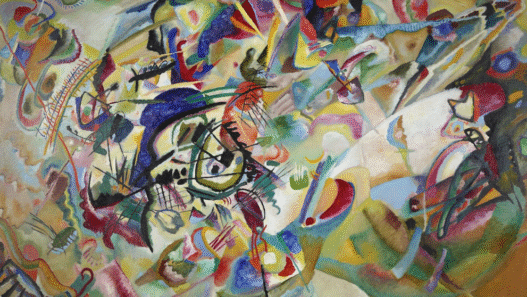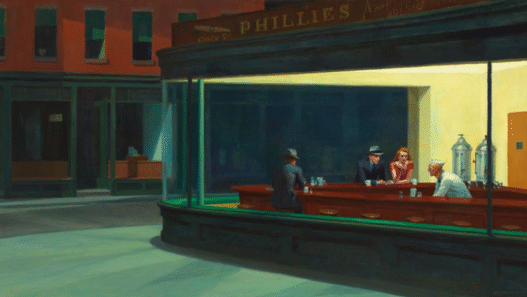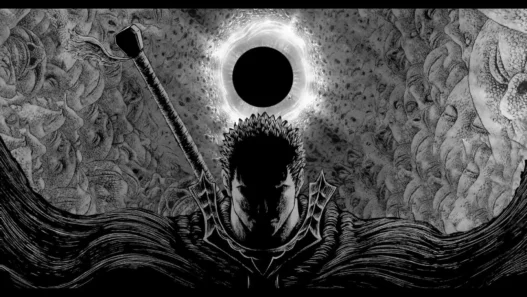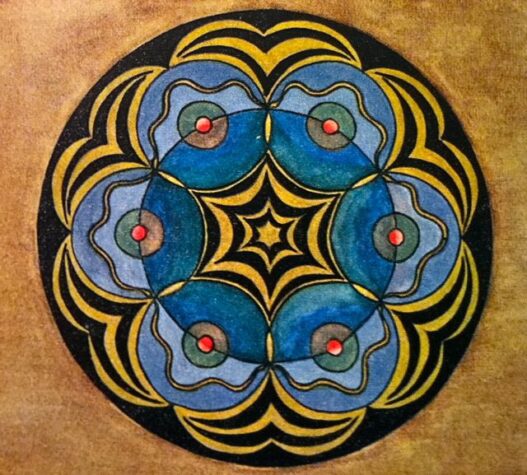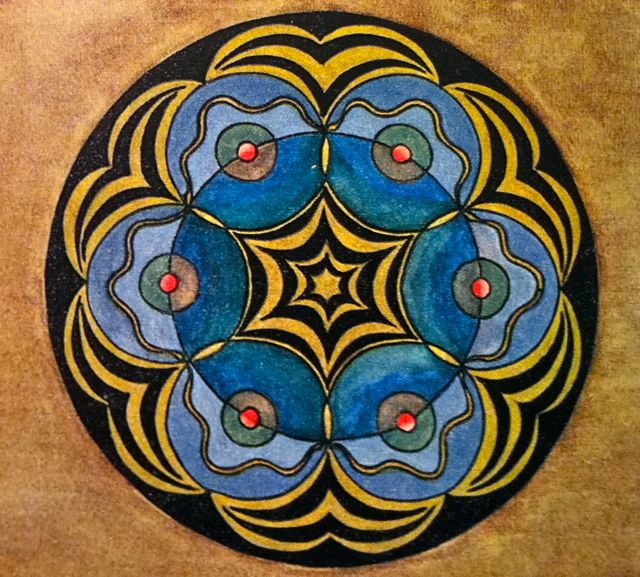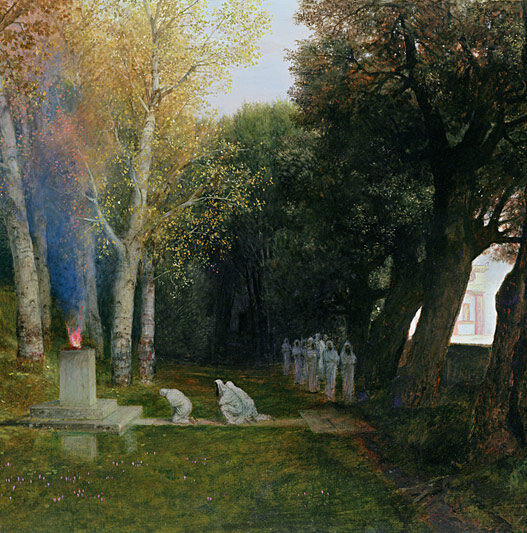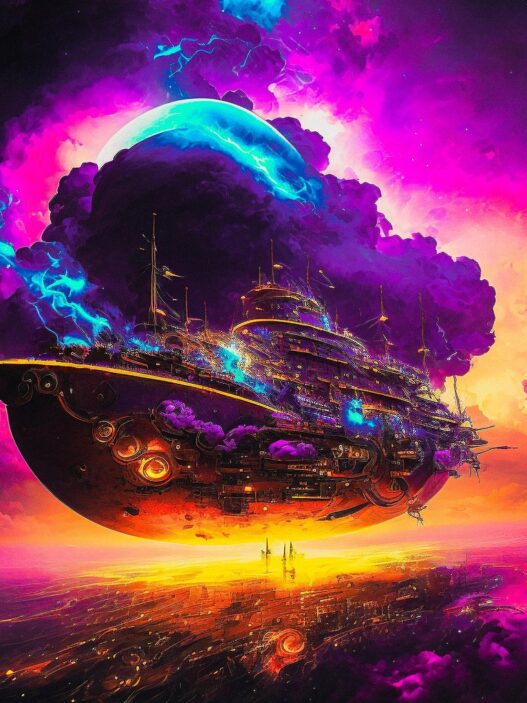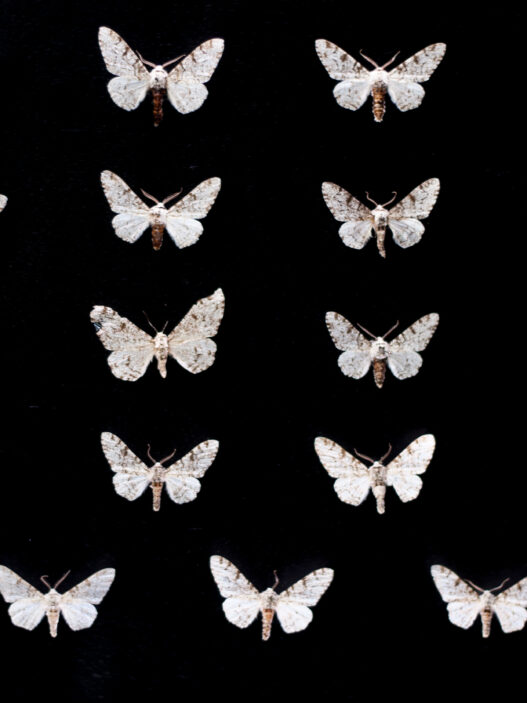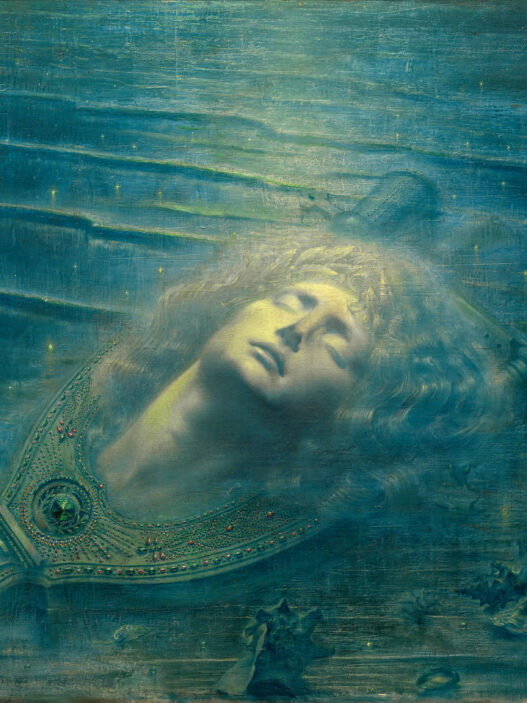Mythological creatures like the Minotaur, Medusa, and Phoenix often serve as symbols of the human psyche. These figures carry timeless messages that remain deeply relevant today.
They act as external representations of internal struggles such as fear, ambition, rage, hope, and rebirth. Through their symbolism, they reveal profound insights into the human condition.
Furthermore, they emphasize universal tensions between instinct and reason, life and death, and the ongoing search for self-discovery.
Archetypes of the Collective Unconscious
Carl Jung proposed that myths and creatures across cultures reflect archetypes: universal patterns within the human psyche.
These figures — the Wise Old Man, the Trickster, the Hero — surface again and again, showing us parts of ourselves that we often ignore or repress.
The idea of the Collective Unconscious, introduced by Carl Jung, is deeply tied to mythology and symbolism in art. Jung believed that all humans share a reservoir of primal images and archetypes as well as ancient symbols like the hero, the labyrinth, or the great mother.
Many artists such as Gustave Moreau and Jean Delville tapped into mythology, knowingly or unknowingly, drawing from this shared inner world.
When they include symbols into their work, they aren’t just telling a personal story. They are speaking a universal language, one that echoes through time and connects us to forgotten myths, timeless fears, and collective dreams.
The main intention is to explore a deeper passage of our imagination and have the viewer dwell over key areas.
In Odilon Redon’s “The Cyclops,” the lonely, dreamlike giant watching over a sleeping nymph is not just a personal vision — it taps into ancient myths of monsters and guardians, inviting the viewer to wander through a deeper emotional landscape of fear, tenderness, and the unknown.
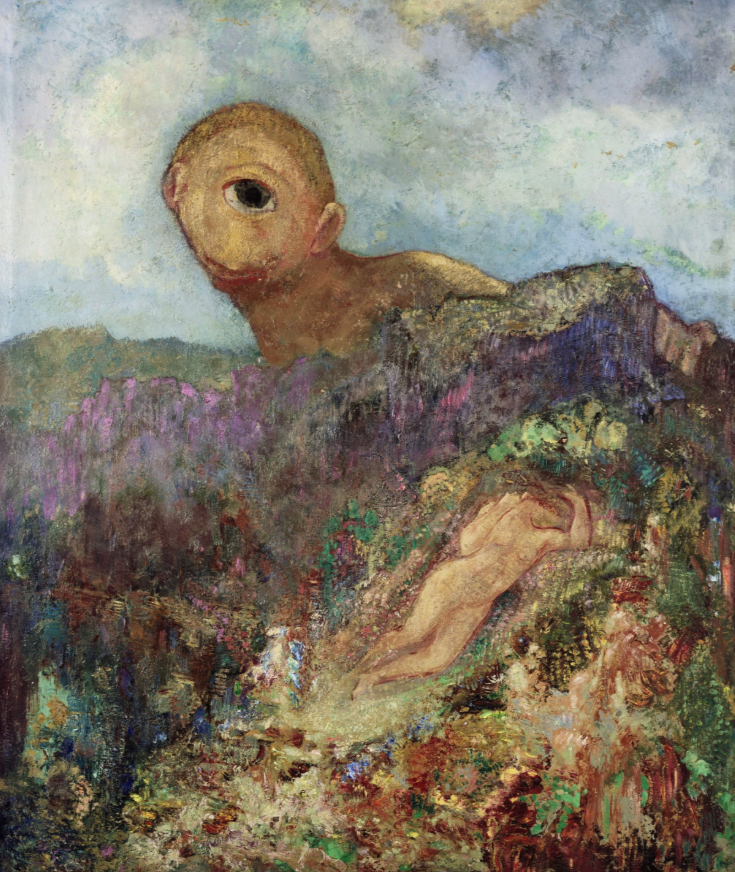
Painting by Odilon Redon
Labyrinths, monsters, and heroic journeys map our innermost spiritual and emotional challenges.
Mythical Creatures and Their Symbolism
The Sphinx – Also known as The Keeper of Mysteries, the Sphinx asks riddles and blocks the path forward. She embodies life’s great questions demanding introspection before transformation can occur.
Medusa – Once a beautiful maiden, Medusa’s curse transforms her into a figure of both horror and power. She represents both externalised rage and the possibility of inner metamorphosis.
The Phoenix – The Phoenix burns itself to ashes and is reborn, stronger than before. A powerful symbol of resilience, cycles of life, and creative reinvention.
The Minotaur – Half-man, half-bull, trapped in the labyrinth — the Minotaur symbolises our struggle to master base instincts with higher consciousness.
Explore its deeper meaning here: The Symbolism of the Minotaur.
Mythological Beasts in Modern Art and Literature
Mythological beasts have always been more than just creatures of ancient lore; they are archetypes that continue to shape modern art and literature.
The term “beast” itself evokes a side of the human nature that is often feared or simply misunderstood.
From the dragons of fantasy novels to the surreal monsters in contemporary paintings, these mythical beings remain powerful symbols, representing everything from personal conflict to the mysteries of the subconscious.
In modern works, artists and writers revisit these ancient creatures, reimagining them in new contexts and exploring their timeless relevance to human nature, identity, and the complexities of our collective fears and desires.
Picasso’s Minotaur: Powerful, aggressive, yet vulnerable.
Dalí’s dreamlike Minotaurs: Exploring subconscious fear.
Neil Gaiman’s novels: Urban myths in modern settings.
If the Minotaur’s story stirs something in you too, you might enjoy exploring more in my full article about The Symbolism of the Minotaur
Why Myth Still Resonates Today
Despite technological advances, human fears, hopes, and dreams remain remarkably consistent. We can find examples of this throughout 1000’s of years where humans turned to myths and creatures helping confront those emotions. Sometimes more easily than if they were presented in ordinary human forms.
Discover how these inner journeys are mirrored by ancient labyrinths too:
The Symbolism of the Labyrinth in Myth and Art.
Embracing Our Inner Beasts
Facing mythological creatures within ourselves allows for true transformation. Each of us harbours a labyrinth, a Minotaur, a Phoenix…the task is to know them, not deny them.
